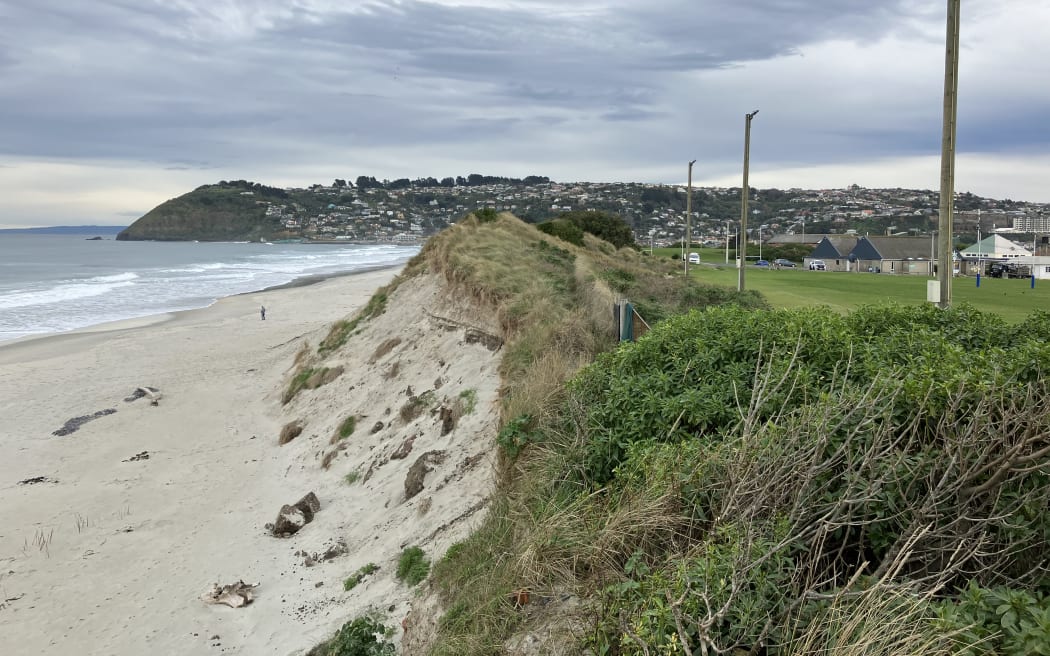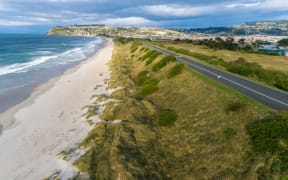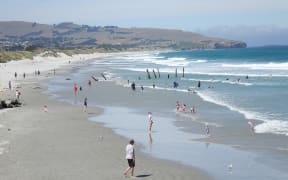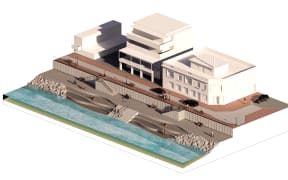
Kettle Park can be seen to the right. Photo: Dunedin City Council
Toxic landfill under a South Dunedin seaside sportsfield is presenting an expensive barrier to shoring up against coastal erosion.
Kettle Park tops a former landfill site, where rubbish was dumped in the first half of the 20th century. It is right next to the sand dunes at St Claire's Middle Beach.
As part of Dunedin City Council's long-term coastal plan to protect the wider St Clair to St Kilda coast from sea-level rise, environmental and engineering consultancy Tonkin + Taylor has drilled 60 boreholes in Kettle Park to analyse soil samples.
It found copper, lead and zinc, some in very high concentrates.
The Tonkin + Taylor report warned of the risk of exposing the waste following a series of storms which have eroded the dune system over the past 10 to 15 years.
It was estimated the cost of excavating the site could run to tens of millions of dollars, unless alternative barriers were put in place to prevent the sea from clawing out the contents of the rubbish dump.
Dunedin Mayor Jules Radich told Nine to Noon the landfill was made up of demolition waste from construction, asbestos, corrugated iron, motor parts and motor bodies.
Erosion of St Clair started when a seawall was built in the 1870s, Radich said. The next beach along, without a seawall, has very little erosion.
"Several seawalls were constructed and destroyed by the sea, but placing a wall against the sea creates erosion because the waves hit the wall and then scour the sand as they are reflected off it."
This was the primary cause of erosion at the beach and mitigation began in 1902 when groynes - a wooden fence built straight out into the surf - were built, he said.
"What that did is it accumulated sand on either side of it, and so that built up a sand buffer in front of the wall and then that stopped the waves from hitting the wall. Subsequent walls have lasted much longer, but now the final remaining groyne, which was built in 1955, that has pretty much all gone."
Each winter there was further erosion, and the sand dune face was moved back about 50 metres, he said - "quite a lot of erosion".
"We can't afford just to leave [the landfill] there because as sea level rises, the size of winter storms will increase… so we need to take remedial action to make sure we don't have the beach strewn with rubble and potentially toxic material."
What are the options to mitigate erosion?
Radich said options to mitigate were limited.
Sand sausages were put at the end of the concrete wall but all this had done was move the erosion problem along a bit, Radich said.
He wanted the groyne repaired, basically building a wooden fence out into the surf to trap sand.
"My suggestion is in the first instance, just replace the groyne and that would give us a sand buffer in front of the landfill."
The next step would be removing the landfill and replacing toxic material with sand.
"The landfill was put there in the first instance because the groyne had built up the sand dunes and it was decided that all of the sudden behind the dunes, the protective row of dunes, could be mined for sand and replaced with material."
The cost of excavating and dealing with the landfill would not really be known until work was begun, Radich said. The working figure sometimes used was $50 million.
Radich said the process could be spread out over a period of time.




